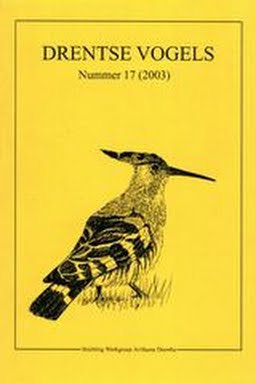2003
Het Fochteloërveen als kraamkamer voor Kraanvogels Grus grus
Publication
Publication
Drentse vogels , Volume 17 - Issue 1 p. 22- 27
In the 20th century, Cranes were passage migrants in The Netherlands; breeding was not recorded. This changed in 2001, when Cranes bred for the first time in the Fochteloerveen, a 2000 ha peat moor relic managed as a nature reserve along the border of the provinces of Drenthe and Friesland; a single pair raised one chick. In 2002, two breeding pairs were present, of which one raised a chick. One of the adults of the failed pair died in the course of the summer. In 2003, again two pairs were present. One pair raised two young in the central part of the peat moor, whereas the other pair started a clutch outside the core area in a small fen, surrounded by farmland (potatoes, cereals, grassland), woodlots and small heaths. This area is thinly populated. Both pairs were successful (2 and 1 young respectively). Both pairs apparently preferred remote and quiet areas, where disturbance was restricted. Nevertheless, the farmland pair had to switch its foraging area when two meadows were mowed. Also, a stray dog had a considerable effect on the behaviour of the farmland pair; both adults stayed in the fen for hours after this disturbance. The two pairs that occupied the same breeding site in two consecutive years both showed an advancement in lay date; the successful pair of 2002 advanced its lay date by about two weeks in 2003, the failed pair of 2001 by about a week in 2002. The expanding Crane population will run into increasing disturbance from human activities, an inevitable aspect of the dense human population in The Netherlands, As a matter of fact, even a large nature reserve like Fochteloerveen – despite its size and restricted accessibility – is not safe haven anymore. During the last decade, nature protection societies have spend a lot of energy in “selling” nature reserves to a large public, by providing media attention, new paths, signs, look-outs, excursions and parking lots, in short: opening up otherwise fully protected and large areas where nature protection used to be priority number one. Because of their vulnerability for disturbance it is still questionable whether Cranes will be able to sustain and expand this tentative population in the densely populated Netherlands, where nature protection and recreation are regarded as basically the same.
| Additional Metadata | |
|---|---|
| Drentse vogels | |
| CC BY 3.0 NL ("Naamsvermelding") | |
| Organisation | Werkgroep Avifauna Drenthe |
|
Herman Feenstra. (2003). Het Fochteloërveen als kraamkamer voor Kraanvogels Grus grus. Drentse vogels, 17(1), 22–27. |
|
